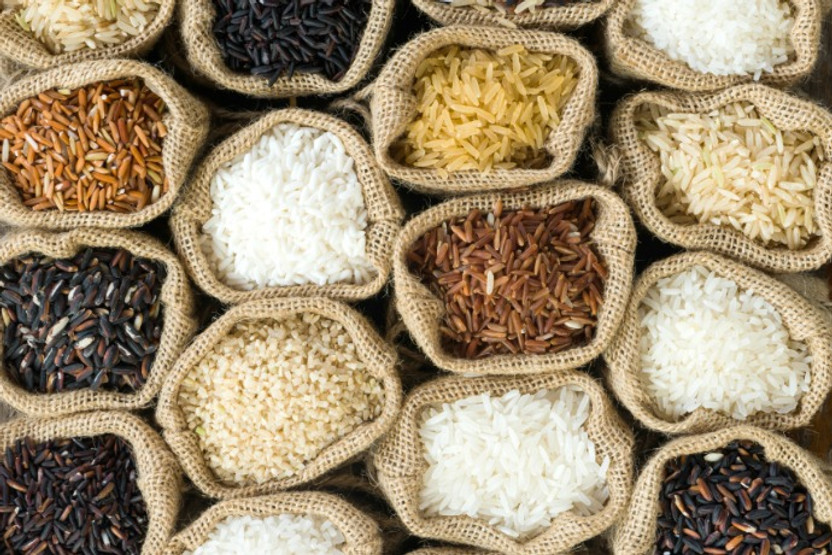A Guide to the Different Types of Rice
Posted by Julie on Apr 25th 2017
Rice is a versatile grain. Serve it alone as a side dish, or use it as an ingredient in recipes. But do you know the differences between various types of rice, and which are better in certain dishes?
In this post, we'll explore a few of the most common varieties of rice, including one that isn't actually rice at all.
Types of Rice: Size Matters
Before we discuss rice varieties, it's helpful to understand how size affects properties of rice. Rice can be long, medium or short grain. This classification refers to the length of each grain in relation to its width. Click over to The Kitchn to see a photo from Kelli Foster that illustrates how these three sizes of rice clearly differ.
Long grain rice is obviously the longest and thinnest of the three. On the other hand, short grain rice can almost look round. Medium grain rice is right in the middle; like long grain rice, it's longer than it is wide, but it's definitely shorter and wider than long grain rice.
Physical dimensions aren't the only difference between short, medium and long grain rice. The type and amount of starch in rice also varies according to its size.
Amylose and amylopectin are the two starches in rice. Without getting too technical, amylopectin is what makes rice sticky, with grains that clump together, and amylose is what makes rice fluffy, with grains that stay separate.
Long grain rice has more amylose and less amylopectin, while short grain rice has less amylose and more amylopectin. That's why long grain rices like basmati and jasmine cook up differently from the types of rice used for risotto and sushi.
Types of Rice: Brown Rice
Brown rice is a perfect place to start because it is the least processed. The inedible hull has been removed from each grain, but the bran and germ are still intact. The bran and germ contain nutrients and fiber. That's why brown rice is often thought of as being healthier, even if you didn't previously know exactly why this is true.
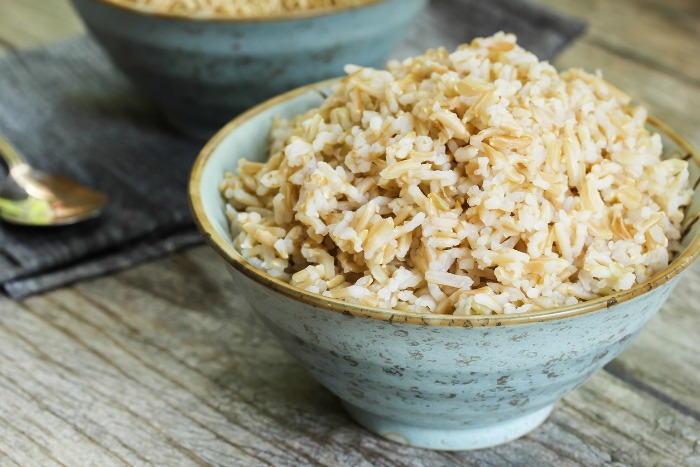
Unfortunately, the taste and texture of brown rice isn't as widely appealing. On The Kitchn, they suggest toasting the rice before cooking to impart more flavor. Then let it sit for several minutes once it has finished cooking, just as you would let meat rest before serving. Doing so allows the rice to absorb the rest of the moisture in the pot, improving its texture.
Types of Rice: Converted Rice
Technically, converted (or parboiled) rice is white rice, but it's undergone processing that changes the texture and composition. Before removing the hull, bran, and germ, the entire grain is soaked and steamed.

This process accomplishes two things. One, the grain absorbs nutrients from the hull, bran, and germ. Two, converted rice cooks up less sticky and more fluffy than white rice. In short, converted rice has the taste of white rice, with the nutrition and fiber of brown rice.
Types of Rice: Arborio Rice
Arborio rice is used for making risotto. It's a short grain rice with a lower percentage of amylose (and a correspondingly higher percentage of amylopectin). The release of amylopectin during cooking is what makes risotto creamy.
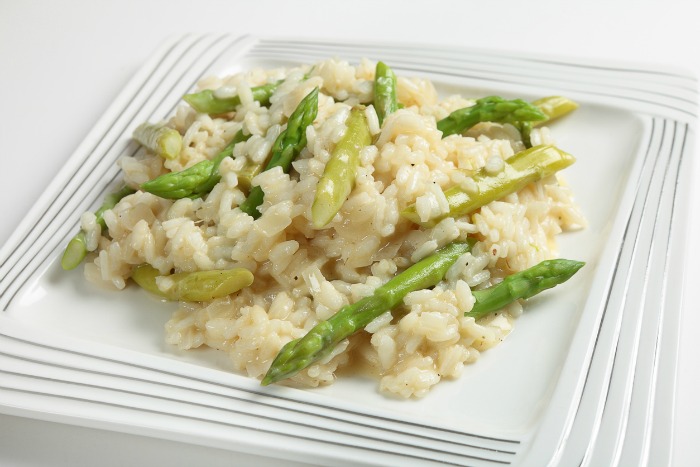
Arborio rice is also able to absorb a larger amount of liquid without getting mushy. There's also a structural firmness in the center of the grain (called the chalk) that gives arborio rice a "bite" even after it's fully cooked.
Types of Rice: Basmati Rice
While it's tempting to use Basmati rice and Jasmine rice interchangeably, they're actually quite different. Basmati rice comes from northern India and is used in Indian and Middle Eastern cooking. Jasmine rice originated in Thailand and is used in southeast Asian cooking. More on Jasmine rice in the next section.
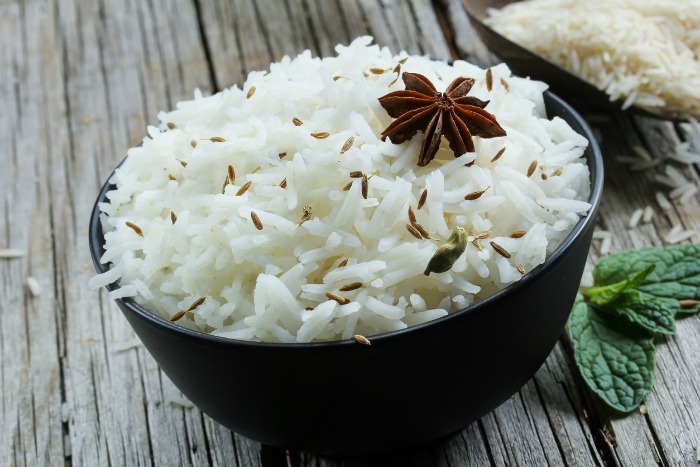
Basmati is a long grain variety, available both white and brown. All the sources we found agree you should soak Basmati rice before cooking, but the reasons differ. Some insist more flavor is preserved when rice absorbs liquid at lower temperatures. Others maintain the texture of Basmati rice is what benefits from soaking.
Types of Rice: Jasmine Rice
Like Basmati rice, Jasmine rice is also a long grain variety with a distinctive aroma. However, Jasmine rice is shorter, thicker, and stickier than Basmati rice. The stickiness means that it can be hard to get it right when cooking Jasmine rice.
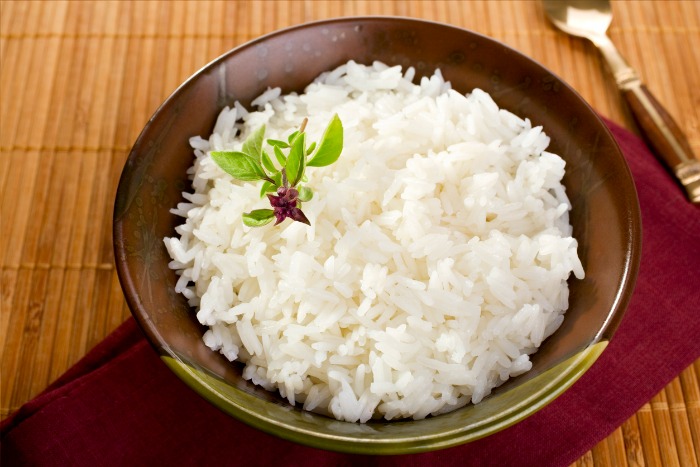
In our research, we found mixed results where it comes to rinsing Jasmine rice before cooking. Some sources insist on it, while others don't mention it. Temple of Thai explains that rinsing rice keeps it from getting too sticky, so we recommend you don't skip this step.
On the other hand, we found unanimous agreement on the importance of letting your rice "rest" in a covered pot before stirring, fluffing, and serving.
Types of Rice: Wild Rice
Wild rice isn't actually rice -- it's a type of grass that's native to North America. It's also higher in protein than quinoa, and a great addition to soups, salads, and casseroles.

Wild rice takes a long time to simmer and soften. Keep it covered when cooking, and err on the side of using more water rather than less. You can always drain it with a strainer if you find there's still excess water in the pot.
Types of Rice: Cooking Tips and Tricks
In addition to the variety-specific tips we mentioned above, don't miss these guidelines from What's Cooking America (scroll down to the chart). You'll find the optimal ratios of water to rice, as well as estimated simmering times. Remember to add time for your rice to rest between cooking and serving.
 Free shipping over $49
Free shipping over $49










